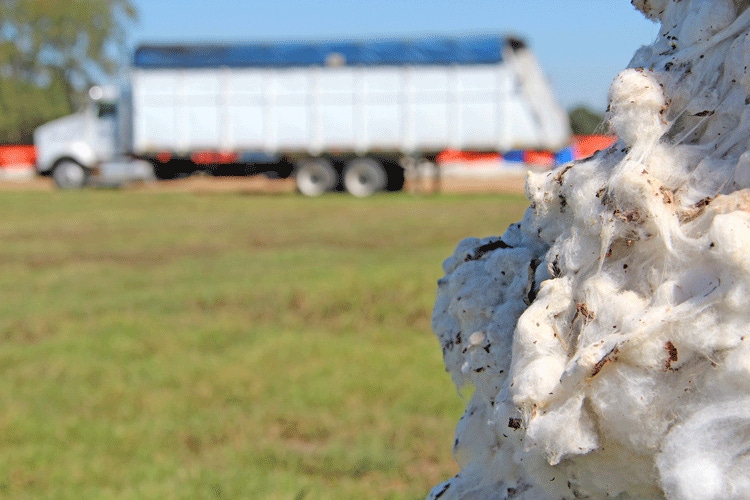
• The mid 70-cent range is actually a good price level, given depressed worldwide cotton demand and other related factors.• Putting a lid on cotton prices includes enormous world stocks in the 76-million-bale range which represents a stocks-to-use ratio of 71 percent, the highest level since 1960.

The short-term outlook for Upland cotton prices is for a continuation in the mid 70-cent range per pound, according to Jarral Neeper, president and chief executive officer of the Calcot marketing cooperative based in Bakersfield, Calif.
“I’m not trying to sound an alarm but the immediate forecast is not for higher cotton prices,” Neeper told a packed crowd during the co-op’s 85th annual meeting in Tempe, Ariz., in late September.
This price forecast will likely disappoint growers anxious for an upward price trend so cotton can better compete for acreage with higher-priced commodities.
Neeper says the mid 70-cent range is actually a good price level, given depressed worldwide cotton demand and other related factors.
Calcot markets cotton for about 1,000 grower members in California, Arizona, New Mexico, and Texas.
Neeper forecasted a “murky” cotton price outlook during last year’s Calcot annual meeting when Upland prices hovered around $1-per-pound.
“Today, the price forecast looks a little darker,” Neeper said.
Current mid 70-cent prices, nearly a buck a pound last year, and record-setting prices two years ago translate into a continued red-knuckle, stomach-churning roller coaster ride for the cotton industry.
One reason why cotton prices remain flat is lackluster export sales tied to decreased production worldwide, linked in part to reduced world trade overall from by global economic recession issues and other factors.
“Even more troubling from the supply and demand perspective are enormous world stocks in the 76-million-bale range,” Neeper explained. “This represents a stocks-to-use ratio of 71 percent; the highest level since 1960.”
Large world stocks translate into intense competition among cotton sellers and lower consumption in key textile regions. Many mills have switched to more affordable synthetic fibers.
An issue with a headlock on Far West fiber prices is the claim by some buyers about contaminated lint in some higher-priced cotton.
“To be fair, some of these claims are legitimate and others you question,” Neeper said. “Buyers have complained about higher contamination in Far West cotton for several years. In reality, contamination has been found in every cotton-supply region in the U.S. Higher prices in recent years made the complaints sound louder.”
Calcot has increased grower education and awareness on this issue.
“For us to capture price premiums for higher quality cotton it’s critical to ensure that the cotton we sell is the highest quality possible,” Neeper emphasized.
Fewer acres expected in 2013
Due to current soft cotton prices, Neeper predicts fewer cotton acres next year in the U.S. and abroad. Domestically, the chief reasons are price competition for grains and soybeans, plus the ongoing drought in Texas, Oklahoma, and Kansas.
During the Calcot chairman’s report, Ron Rayner expressed disappointment in Congress’ inability to implement a new farm law prior to the Sept. 30 expiration of the previous farm program.
“I am not optimistic that Congress will pass a new farm law by year’s end,” Rayner said. “It’s looking more and more likely that Congress will pass a one-year or shorter extension.”
As the cotton industry is well aware, the next farm bill will likely be dramatically different from cotton programs in previous farm laws.
“The direct payment program, which cotton growers have relied on for its safety net feature over the last several years, will likely be deleted in the next farm law,” Rayner said. “This will make bankers nervous about committing funds to growers without a safety net as growers develop production budgets soon for the 2013 crop year.”
Rayner says congressional indecisiveness on the farm bill results in instability for the cotton industry and threatens the large financial investments in its intensive infrastructure.
Calcot was launched in 1927 as a small co-op with a handful of grower members in California. Today, the 85-year-old cooperative is a multi-million dollar business.
About the Author(s)
You May Also Like





